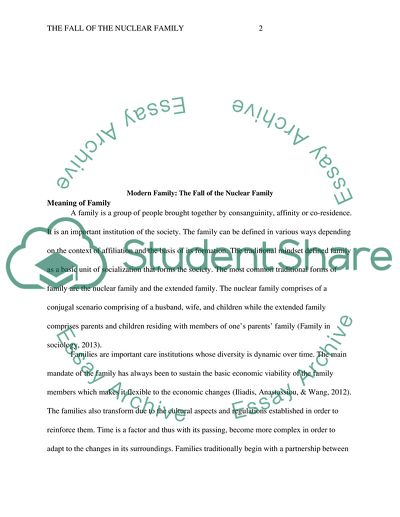Cite this document
(“Transformation of family dynamics in America to include: meaning of Research Paper”, n.d.)
Transformation of family dynamics in America to include: meaning of Research Paper. Retrieved from https://studentshare.org/sociology/1667488-transformation-of-family-dynamics-in-america-to-include-meaning-of-family-fall-of-the-nuclear-family-as-its-replaced-with-untradtional-family-types-what-roles-the-religo-cultural-value-system-played-on-this-and-family-can-be-based-on-more-than-blood
Transformation of family dynamics in America to include: meaning of Research Paper. Retrieved from https://studentshare.org/sociology/1667488-transformation-of-family-dynamics-in-america-to-include-meaning-of-family-fall-of-the-nuclear-family-as-its-replaced-with-untradtional-family-types-what-roles-the-religo-cultural-value-system-played-on-this-and-family-can-be-based-on-more-than-blood
(Transformation of Family Dynamics in America to Include: Meaning of Research Paper)
Transformation of Family Dynamics in America to Include: Meaning of Research Paper. https://studentshare.org/sociology/1667488-transformation-of-family-dynamics-in-america-to-include-meaning-of-family-fall-of-the-nuclear-family-as-its-replaced-with-untradtional-family-types-what-roles-the-religo-cultural-value-system-played-on-this-and-family-can-be-based-on-more-than-blood.
Transformation of Family Dynamics in America to Include: Meaning of Research Paper. https://studentshare.org/sociology/1667488-transformation-of-family-dynamics-in-america-to-include-meaning-of-family-fall-of-the-nuclear-family-as-its-replaced-with-untradtional-family-types-what-roles-the-religo-cultural-value-system-played-on-this-and-family-can-be-based-on-more-than-blood.
“Transformation of Family Dynamics in America to Include: Meaning of Research Paper”, n.d. https://studentshare.org/sociology/1667488-transformation-of-family-dynamics-in-america-to-include-meaning-of-family-fall-of-the-nuclear-family-as-its-replaced-with-untradtional-family-types-what-roles-the-religo-cultural-value-system-played-on-this-and-family-can-be-based-on-more-than-blood.


